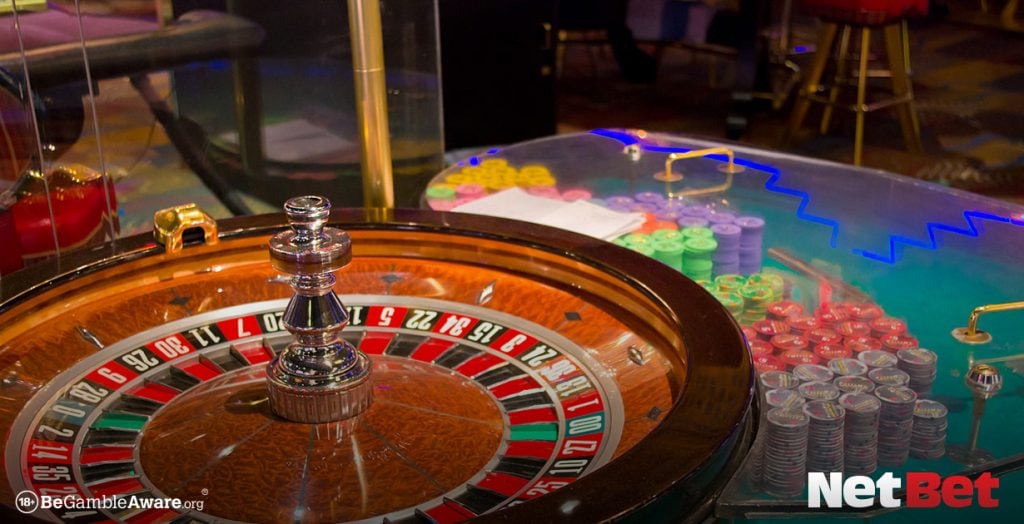
Whether you’re a seasoned gambler or a total newbie, you’ve probably heard of roulette before. The popular game involves a ball being dropped onto a revolving wheel with numbered compartments, with players betting on which number the ball will stop in. But who invented roulette and where did it originate? In this article, we explore everything you need to know.
Who invented roulette?
The first roulette wheel was created in 1655 by Blaise Pascal, a French physicist, mathematician and inventor. Interestingly, Pascal didn’t set out to invent a casino game – instead, he was trying to invent a perpetual motion machine.
A perpetual motion machine is a contraption that continues to run without using an external energy source. Despite the laws of physics saying it’s impossible, Pascal attempted to defy the odds. His experiment failed, but he managed to create one of the most popular casino games in the world in the process.
When asking who invented roulette as we know it today, the answer is Pascal. However, there is some evidence to suggest that the idea might have originated thousands of years before this. Greek and Roman soldiers may have played a similar betting game on their chariot wheels and shields, and ancient Chinese civilisations may have played a variant that resembles the roulette we know today.
Roulette Table
Pascal was the person who invented roulette, but it didn’t become the game we know and love today until 1842. In that year, new wheels came in and made the game even more popular than it was before. Before this, all Roulette wheels had two zero pockets.
When asking who invented roulette, some people think of Francois and Louis Blanc. However, they didn’t actually create the game. They did give the game a major revamp though and removed the double zero from all European wheels. From then on, European Roulette was more popular than it had ever been before. The new wheels were soon brought to Humbug, then to all of Germany, and it wasn’t long before the whole of Europe was using the new version of the game.
So, what was it that made the European wheel so popular? By removing one of the zero pockets, the house edge was decreased to just 2.7%, which is a great deal better than the 5.26% house edge of the old wheels.
History of Roulette Game

So now we know who invented roulette, but what happened after that? After Pascal invented the concept, the first gaming wheel was created in 1720 and used for the Italian game Biribi. Roulette has been played in its present form since 1796. First played in Paris, an early description of the game is found in a French novel by Jacques Lablee, named La Roulette, ou le Jour. The book describes a roulette wheel in the Palais Royal in Paris in the late 1700s. The first reference to a game of this name was written before this, published in regulations for New France in 1758 which prohibited games of “dice, hoca, faro and roulette”.
Roulette wheels were first used in casinos in Paris in the late 1790s. Back then, they had two zero pockets – a single zero and a double zero. The single zero pocket was red while the double zero was black. It wasn’t long before people realised that having black and red zero pockets were confusing, due to the rest of the numbers being either red or black too. To avoid confusion, the zero pockets were changed to the colour green in the 1800s and have remained this way ever since.
In 1843, Francois and Louis Blanc gave the game a major refurb and introduced the single zero style wheels. This decreased the house edge significantly, leading to a rise in the game’s popularity throughout Europe. By the 1800s, Roulette had made its way over to America and could be found in all the major casinos. Unlike the European variant, the American wheel stuck to the double zero concept and continued to be played with 38 numbers.
Roulette wheel numbers
Early roulette wheels had numbers 1 through 28, plus a single and double zero. Early American variants also contained an American Eagle. Labelled the Eagle slot, this house slot gave the casino extra edge and wasn’t particularly popular amongst players. Because of this, it wasn’t long before the American Eagle was removed, and the roulette wheel featured just numbers.
Roulette Game Today
Like most games, roulette has developed significantly over the years. Today, the European roulette wheel has the numbers 1-36 and one 0 pocket. The number pockets are coloured black and red while the 0 pocket is green. The American Roulette wheel is similar to the European version but has two 0 pockets instead of one. This means that American Roulette has a house edge of 5.26%, while European Roulette has an edge of just 2.7%.
As well as being found in brick and mortar casinos, roulette is now popular online. The basic rules of the game remain the same – players bet on which number they believe the ball will land in. If you guess correctly, you’ll win the bet. If you don’t, you’ll lose the bet and can start a new game if you so wish.
Today, many players prefer using online casinos to land-based establishments. If you enjoy the convenience home-based betting but crave the interaction of a physical casino, don’t panic – there’s now a way to get the best of both worlds. Live casinos provide the thrill of a live casino with the comforts of online gambling. Run by a live dealer, players can enjoy the game in real-time and interact with the dealer as they play.
So, there you have it – who invented roulette and the game’s history. Want to try out the game for yourself? At NetBet, we have a wide range of roulette games and slots, including the popular lightning roulette.



